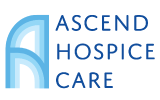When a loved one faces a life-limiting, progressive illness, families also face medical, emotional, and logistical demands that can overwhelm even the most committed relatives. That’s why relying on hospice care improves quality of life for patients and reduces stress on families.
What Hospice Does
Hospice is a specialized form of care that focuses on comfort, symptom control, and family support rather than curative treatment for a terminal condition. When patients are referred to hospice earlier rather than later, they and their families generally receive more comprehensive symptom management, extended access to interdisciplinary teams, and more time to plan and benefit from supportive services.
Defining Roles
What is a primary caregiver? A primary caregiver is the person who provides the majority of day-to-day support for someone with a serious illness. This role often involves assisting with personal care, medication management, transportation, coordinating medical appointments, and decision-making. Primary caregivers may be spouses, adult children, partners, or close friends. Understanding this role helps hospice teams tailor education and support to the family member who carries the bulk of responsibility.
How Hospice Supports the Caregiver for Family Members
Families typically assume the responsibilities of a caregiver for the family without formal training. This task can be physically demanding and emotionally draining. Hospice teams provide practical training, medication education, safety guidance for transfers and mobility, and clear instructions on symptom management at home. Most importantly, hospice staff partner with the family to create a care plan that centers on the patient while acknowledging the caregiver’s limits and needs. This collaboration helps reduce stress and maintain dignity for the person receiving care.

Respite Care
Respite care is short-term care provided to the patient, allowing family caregivers to rest, run errands, attend to medical appointments, or take a brief break from their round-the-clock responsibilities. Under Medicare’s hospice benefit, inpatient respite care is available for up to five consecutive days when needed to relieve those who care for the beneficiary at home. Respite care may be provided in a hospice inpatient unit, a hospital, or a skilled nursing facility, depending on the individual’s needs and the availability of resources. Knowing respite is part of hospice clarifies how families can access intentional breaks without leaving a loved one without clinical oversight.
Caregiving is Widespread and Intense
Family caregiving has expanded significantly. Recent national research reports that about 63 million Americans will provide ongoing care in 2025, an increase that reflects demographic shifts and more complex care needs in the community. Caregivers commonly spend many hours each week assisting; nearly one-quarter of caregivers provide high-intensity care. These realities show why structured programs like hospice are vital: they augment family efforts, reduce avoidable hospital visits, and provide professional backup when needs change.
Practical Benefits Hospice Provides to Primary Caregivers
At Ascend Hospice Care, the benefits to primary caregivers are concrete and measurable:

Common Misconceptions that Delay Timely Hospice Care
Families sometimes delay hospice because they equate hospice with “giving up.” The reality is that hospice care is about maintaining quality of life and providing family-centered support. Other misconceptions include thinking hospice is only for the last few days or that acceptance into hospice will limit loved ones’ access to other services. In truth, hospice teams work to preserve function and comfort for as long as possible, and early enrollment often enables better symptom control and more robust social and practical support for the caregiver and the family.
How to Recognize When Hospice May Help
There is no single rule for timing. Signs that hospice could provide meaningful benefits include uncontrolled symptoms despite treatment, frequent hospital or emergency visits, increasing need for help with daily living, and caregiver exhaustion. When these factors appear, consulting a hospice clinician for an assessment helps families understand available options and plan a pathway that supports both the patient and the person acting as the family caregiver.
Practical Steps for Families and Primary Caregivers
If you are the primary caregiver or a family member providing care, start by asking the treating physician about hospice when the focus of care shifts from cure to comfort. Request a hospice assessment. Ask specifically about respite care, training for complex tasks, and bereavement support. At Ascend Hospice Care, we are committed to transparency about the team members who will support you, including nurses, physicians, social workers, chaplains, home health aides, and volunteers.
Relief for family caregivers is an outcome, not an afterthought. Caregiving is noble and often necessary, but it should not become a solitary burden. By understanding what is a primary caregiver, knowing respite care is available, and recognizing the practical relief hospice offers, families can make informed decisions that protect patient dignity and provide real relief for family caregivers. If your family is managing an advanced illness, consider reaching out to a hospice specialist for an assessment. Early conversation preserves time, reduces crisis, and allows family members to spend meaningful hours with the person they love.




